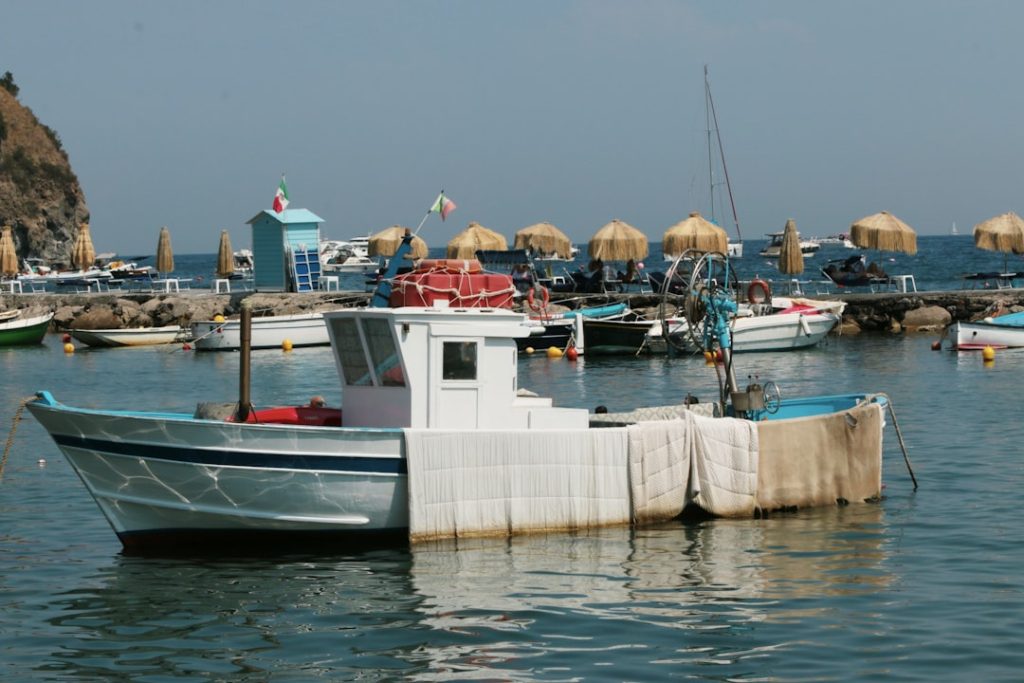In recent years, catamarans have experienced a remarkable surge in popularity within the boating industry. This rise can be attributed to a combination of factors, including advancements in design, increased consumer awareness, and a growing appreciation for the unique benefits that catamarans offer. Traditionally overshadowed by monohull boats, catamarans have carved out a significant niche, appealing to both recreational sailors and serious seafarers alike.
Their dual-hull design not only provides stability but also enhances performance, making them an attractive option for a wide range of boating activities. The evolution of catamarans has been marked by innovative engineering and design improvements that cater to the needs of modern sailors. Manufacturers have embraced cutting-edge materials and construction techniques, resulting in lighter, faster, and more durable vessels.
As a result, catamarans are now seen as versatile platforms suitable for everything from leisurely cruising to competitive racing. The growing interest in sailing as a recreational activity has further fueled this trend, with many new sailors gravitating towards catamarans for their ease of handling and spacious interiors.
Key Takeaways
- Catamarans are increasingly popular due to their stability, speed, and spacious design compared to monohull boats.
- Advances in design and technology are making catamarans more efficient, comfortable, and environmentally friendly.
- The demand for catamaran charters and rentals is rising, driven by their appeal to both casual and experienced sailors.
- Environmental concerns are influencing the catamaran market, promoting eco-friendly materials and sustainable practices.
- Key industry players are investing in innovation, shaping the future of catamarans with new developments and improved performance.
Advantages of Catamarans Over Traditional Monohull Boats
One of the most significant advantages of catamarans is their inherent stability. The wide beam of a catamaran allows it to remain upright in rough waters, reducing the likelihood of capsizing compared to traditional monohulls. This stability is particularly appealing to families and novice sailors who may be apprehensive about sailing in choppy conditions.
Additionally, the dual-hull design minimizes heeling, providing a more comfortable experience for passengers and crew alike. This stability also translates into better performance under sail, as catamarans can maintain speed even in less-than-ideal wind conditions. Another key benefit of catamarans is their spaciousness.
With two hulls, catamarans offer significantly more living space than monohulls of similar length. This extra room can be utilized for larger cabins, more extensive galley areas, and additional storage options. Many catamarans are designed with outdoor living in mind, featuring expansive decks and lounging areas that enhance the overall sailing experience.
This focus on comfort and space has made catamarans particularly popular among charter companies and vacationers seeking a luxurious sailing experience.
Emerging Trends in Catamaran Design and Technology

As the demand for catamarans continues to grow, manufacturers are responding with innovative designs and advanced technologies that push the boundaries of what these vessels can achieve. One notable trend is the integration of eco-friendly materials and sustainable practices in the construction of catamarans. Many builders are now utilizing recycled materials and environmentally friendly resins to reduce their carbon footprint while maintaining high performance standards.
This shift towards sustainability is not only beneficial for the environment but also appeals to a growing demographic of environmentally conscious consumers. Another emerging trend is the incorporation of smart technology into catamaran design. Modern catamarans are increasingly equipped with advanced navigation systems, automated sail controls, and integrated communication tools that enhance the sailing experience.
These technological advancements allow sailors to monitor their vessel’s performance in real-time, making it easier to adjust sails and optimize speed. Furthermore, the rise of electric propulsion systems is transforming how catamarans operate, offering quieter and more efficient alternatives to traditional diesel engines. This shift not only reduces emissions but also aligns with the broader movement towards greener boating practices.
The Growing Popularity of Catamaran Charters and Rentals
| Year | Number of Catamaran Charters (Thousands) | Average Rental Duration (Days) | Popular Destinations | Customer Satisfaction (%) |
|---|---|---|---|---|
| 2020 | 45 | 7 | Caribbean, Mediterranean | 85 |
| 2021 | 60 | 8 | Caribbean, Mediterranean, South Pacific | 88 |
| 2022 | 75 | 9 | Caribbean, Mediterranean, South Pacific, Indian Ocean | 90 |
| 2023 | 95 | 10 | Caribbean, Mediterranean, South Pacific, Indian Ocean, Southeast Asia | 92 |
| 2024 (Projected) | 120 | 11 | Caribbean, Mediterranean, South Pacific, Indian Ocean, Southeast Asia | 94 |
The chartering and rental market for catamarans has seen exponential growth in recent years, driven by an increasing number of travelers seeking unique and memorable experiences on the water. Catamaran charters offer an appealing alternative to traditional hotel stays, allowing vacationers to explore beautiful coastlines and secluded islands while enjoying the comforts of a floating home. This trend has been particularly pronounced in popular sailing destinations such as the Caribbean, Mediterranean, and South Pacific, where charter companies have expanded their fleets to meet rising demand.
The appeal of catamaran charters lies not only in their spaciousness but also in the flexibility they provide. Travelers can customize their itineraries, choosing to anchor in picturesque bays or visit bustling ports at their leisure. Many charter companies offer fully crewed options, allowing guests to relax and enjoy their vacation without the responsibilities of sailing.
This combination of luxury and adventure has made catamaran charters an attractive option for families, couples, and groups looking to create lasting memories on the water.
The Impact of Environmental Awareness on the Catamaran Market
As global awareness of environmental issues continues to rise, the boating industry is increasingly responding to consumer demand for sustainable practices. Catamaran manufacturers are at the forefront of this movement, implementing eco-friendly technologies and materials in their designs. The use of solar panels for energy generation, wind turbines for auxiliary power, and hybrid propulsion systems are becoming more common in new models.
These innovations not only reduce the environmental impact of sailing but also appeal to a growing segment of eco-conscious consumers who prioritize sustainability in their purchasing decisions. Moreover, many sailing enthusiasts are now seeking out experiences that align with their values regarding environmental stewardship. This shift has led to an increase in eco-tourism initiatives that focus on responsible sailing practices and conservation efforts.
Charter companies are beginning to promote eco-friendly sailing experiences that educate guests about marine ecosystems and encourage sustainable practices while on board. As awareness continues to grow, it is likely that the demand for environmentally responsible catamarans will further shape the market landscape.
Key Players and Market Analysis in the Catamaran Industry

The catamaran market is characterized by a diverse array of manufacturers ranging from established brands to innovative newcomers. Key players such as Lagoon, Fountaine Pajot, and Leopard have long been recognized for their high-quality vessels that cater to both cruising and charter markets. These companies have built strong reputations based on their commitment to craftsmanship, performance, and customer satisfaction.
Their extensive product lines offer a variety of options for different budgets and preferences, ensuring that there is a catamaran suitable for nearly every type of sailor. In addition to established brands, new entrants are emerging in the market with fresh ideas and innovative designs. Startups are leveraging advancements in technology and materials to create unique offerings that challenge traditional notions of what a catamaran can be.
This competitive landscape fosters innovation and drives improvements across the industry as manufacturers strive to differentiate themselves from one another. Market analysis indicates that as consumer interest in catamarans continues to grow, investment in research and development will play a crucial role in shaping future trends.
The Future of Catamarans: Innovations and Developments
Looking ahead, the future of catamarans appears bright as manufacturers continue to innovate and adapt to changing consumer preferences. One area poised for significant growth is the development of electric propulsion systems that offer cleaner alternatives to traditional engines. As battery technology advances, we can expect to see more catamarans equipped with electric motors capable of providing sufficient power for both cruising and maneuvering without relying on fossil fuels.
Additionally, advancements in automation and smart technology will likely play a pivotal role in shaping the next generation of catamarans. Features such as autonomous sailing systems could revolutionize how sailors interact with their vessels, allowing for greater ease of use and enhanced safety on the water. As these technologies become more accessible, they will attract a broader audience to the world of sailing, further driving interest in catamarans as a viable option for both leisure and adventure.
Tips for Buying or Renting a Catamaran for Sailing Enthusiasts
For those considering purchasing or renting a catamaran, there are several important factors to keep in mind to ensure a successful experience. First and foremost is understanding your specific needs and preferences as a sailor. Consider how you plan to use the vessel—whether for leisurely cruising with family or embarking on long-distance voyages—and choose a model that aligns with those goals.
Researching different brands and models can provide valuable insights into which features are most important for your intended use. When renting a catamaran, it’s essential to assess your level of sailing experience. Many charter companies offer options ranging from bareboat rentals for experienced sailors to fully crewed charters for those who prefer a more hands-off approach.
If you’re new to sailing or unfamiliar with operating a catamaran specifically, opting for a crewed charter can enhance your experience by providing expert guidance while you enjoy your time on the water. In addition to considering your sailing skills, it’s wise to evaluate your budget carefully. Catamarans can vary significantly in price based on size, age, and features; therefore, establishing a clear budget will help narrow down your options effectively.
Whether buying or renting, be sure to factor in additional costs such as maintenance fees or insurance when making your decision. Lastly, don’t hesitate to seek advice from experienced sailors or industry professionals when navigating the process of buying or renting a catamaran. Engaging with knowledgeable individuals can provide valuable insights into what to look for in terms of quality construction, performance capabilities, and overall value—ensuring that you make an informed choice that enhances your sailing adventures for years to come.


